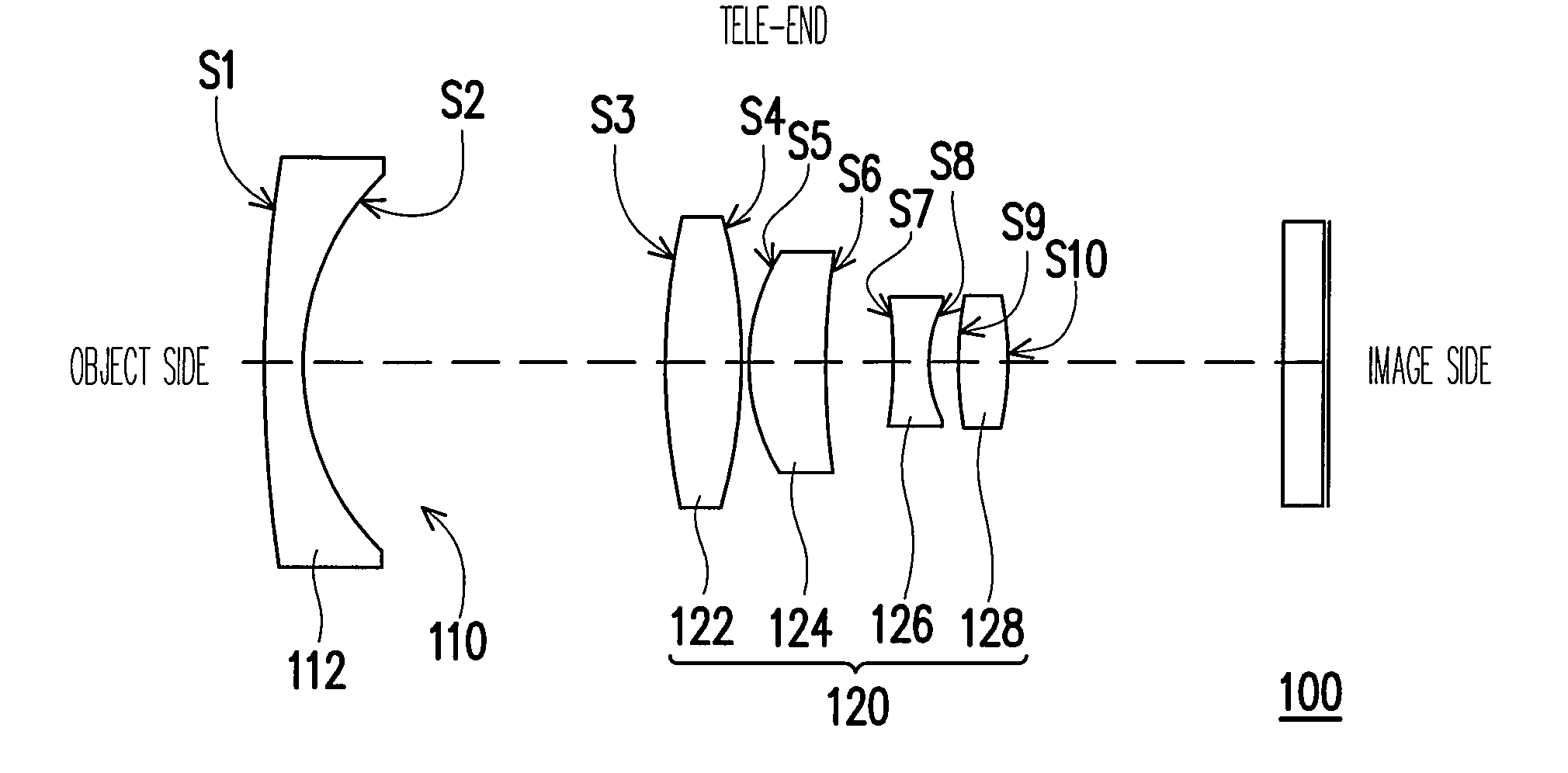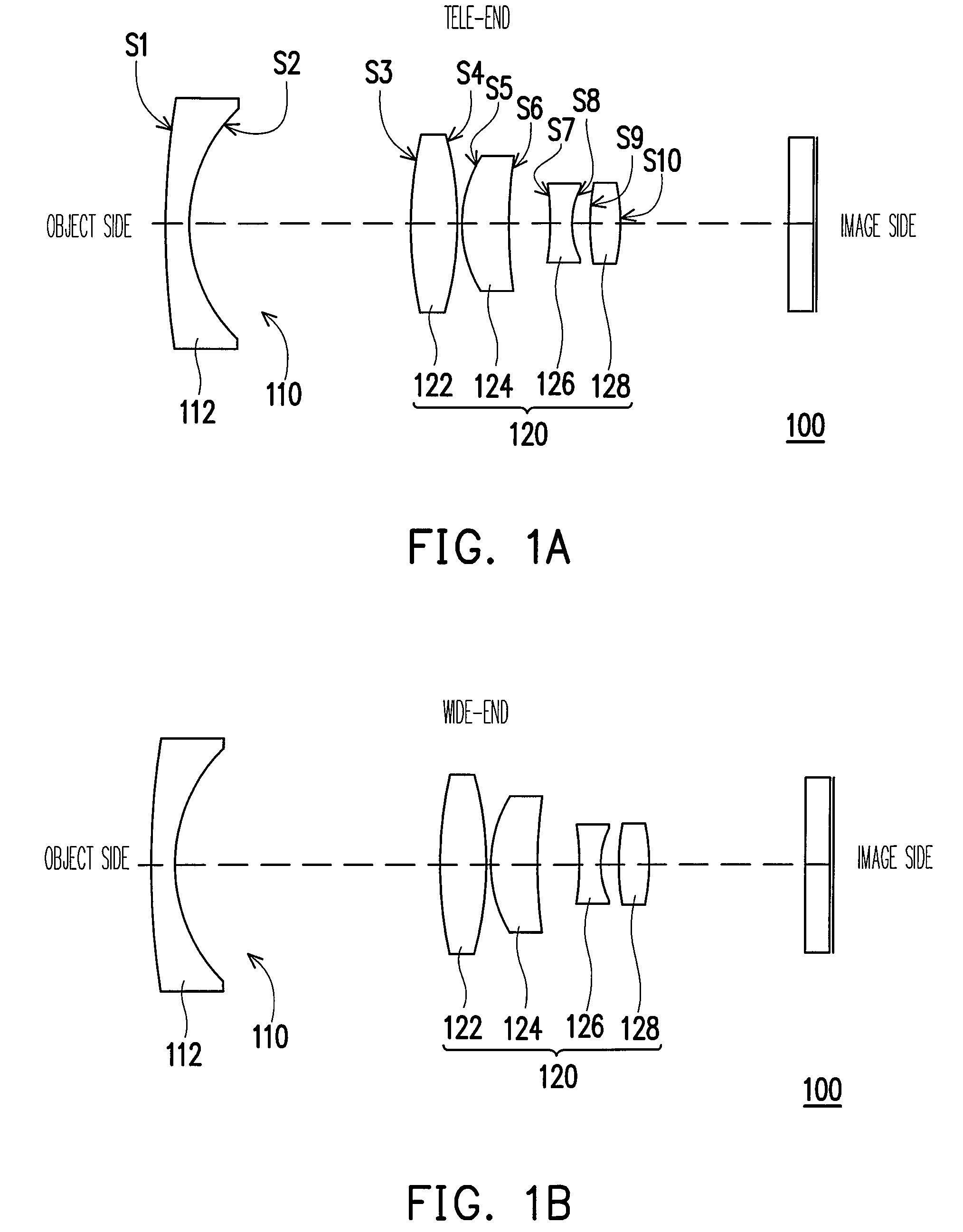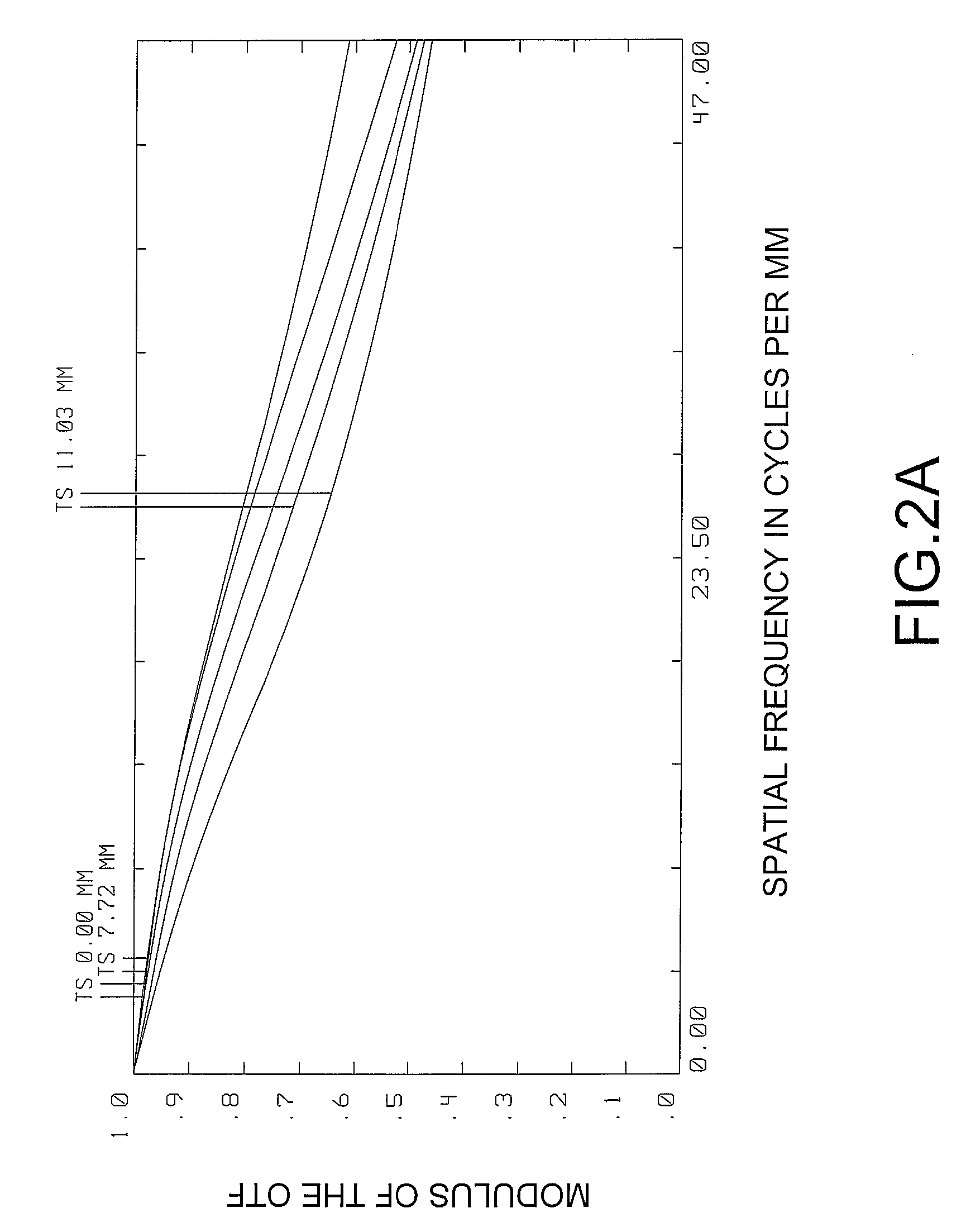Zoom lens
a zoom lens and zoom technology, applied in the field of zoom lenses, can solve the problems of higher production cost, difficult to reach a large relative aperture, and further increase the production cost of conventional zoom lenses, and achieve the effect of reducing production costs
- Summary
- Abstract
- Description
- Claims
- Application Information
AI Technical Summary
Benefits of technology
Problems solved by technology
Method used
Image
Examples
Embodiment Construction
[0014]FIGS. 1A and 1B are two diagrams of a zoom lens respectively taking the tele-end and the wide-end according to an embodiment of the present invention. Referring to FIGS. 1A and 1B, the zoom lens 100 of the embodiment includes a first lens group 110 having a negative refractive power and a second lens group 120 having a positive refractive power, wherein the second lens group 120 is disposed between the first lens group 110 and an image side. The first lens group 110 includes a first lens 112 with a negative refractive power, and the first lens 112 is a meniscus lens having a convex surface facing the object side and has an Abbe number greater than 50. In addition, the zoom lens 100 satisfies the following conditions: (1) −0.6100, F1 represents a focal length of the first lens group 110 and R2 represents a curvature radius of a surface S2 facing the second lens group 120 of the first lens 112.
[0015]Since the first lens group 110 has a single lens, thus, the zoom lens 100 has a ...
PUM
 Login to View More
Login to View More Abstract
Description
Claims
Application Information
 Login to View More
Login to View More - R&D
- Intellectual Property
- Life Sciences
- Materials
- Tech Scout
- Unparalleled Data Quality
- Higher Quality Content
- 60% Fewer Hallucinations
Browse by: Latest US Patents, China's latest patents, Technical Efficacy Thesaurus, Application Domain, Technology Topic, Popular Technical Reports.
© 2025 PatSnap. All rights reserved.Legal|Privacy policy|Modern Slavery Act Transparency Statement|Sitemap|About US| Contact US: help@patsnap.com



